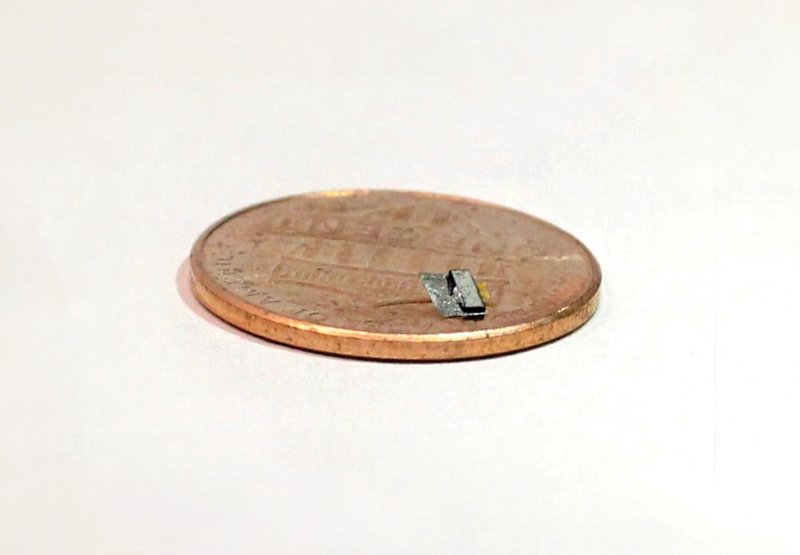Magnetoelectric material to stimulate neural tissue growth
A magnetoelectric material that performs a magnetic to electric conversion 120 times faster than similar materials could restore function in severed nerves.

The therapeutic potential of magnetoelectrics has long been recognised, but traditionally neurons have been unable to respond to the shape and frequency of the electric signal resulting from the conversion of magnetic fields into electric ones.
Scientists at Rice University, Texas, USA, have designed what they claim is the first magnetoelectric material that performs this conversion faster than any other material, but can also precisely stimulate neurons remotely and bridge the gap in a broken sciatic nerve in a rat model.
A natural signal from one end of a broken nerve triggered stimulation through the metamaterial to the other side of the nerve. 'We were able to form this electrical bridge and transfer the information much faster than previous magnetic materials,' notes lead author Joshua Chen.
The two sides of the broken nerve are connected with a 'latency of only 4ms', says Chen, 'which is significantly faster than other magnetic materials are able to stimulate nerves.
This latency is already around how fast nerves usually fire and communicate'.
Instead of implanting a neurostimulation device, tiny amounts of the material can be injected into the required site.
They used around 1mT for their AX magnetic fields and can currently power these materials at centimetre depths, 'which are already quite deep for many applications such as nerve stimulation…', reflects Chen.
They only used 'one dust-size magnetic material around a few millimetres to be able to stimulate and restore nerve function', and don’t anticipate significant changes for larger animals or even humans. He points out that this is weak compared to Tesla fields in MRI scans that are safe for the body.
Chen confirms that this is a new class of metamaterial – one with unique nonlinear properties with asymmetric electric signals, which can be pulsed at lower frequencies that cells can respond to.
They started with a piezoelectric layer of lead zirconium titanate (PZT) sandwiched between two magnetorestrictive layers of metallic glass alloys, or Metglas, which can be rapidly magnetised and demagnetised.
When the material vibrates, the piezeoelectric material creates electricity, but as the signals are too fast and uniform for neurons to detect, they engineered a new material.
They layered 50nm of platinum, 40nm of hafnium oxide and 130nm of zinc oxide and added the stacked materials onto the original magnetoelectric film.
Professor Jacob Robinson at the University explains how other magnetoelectric materials have a linear relationship between the electric and magnetic fields, but their aim was to create a nonlinear version.
'The materials essentially are able to block current from flowing in one direction, similar to a one-way valve, so that we have an asymmetric electric signal.'
They used traditional semiconductor techniques for fabrication and then deposit the layers by sputtering and atomic layer deposition.
Chen reveals that significant effort went into finding compatible materials that worked well in a biological context. PZT and Metglas, an iron-based alloy, might not be fully biocompatible, admits Chen, and so they added the biocompatible material, Parylene-C, 'to make sure our material composite (is) safe'. He notes there are other piezoelectric and magnetorestrictive materials they could explore that are lead-free and biocompatible.







